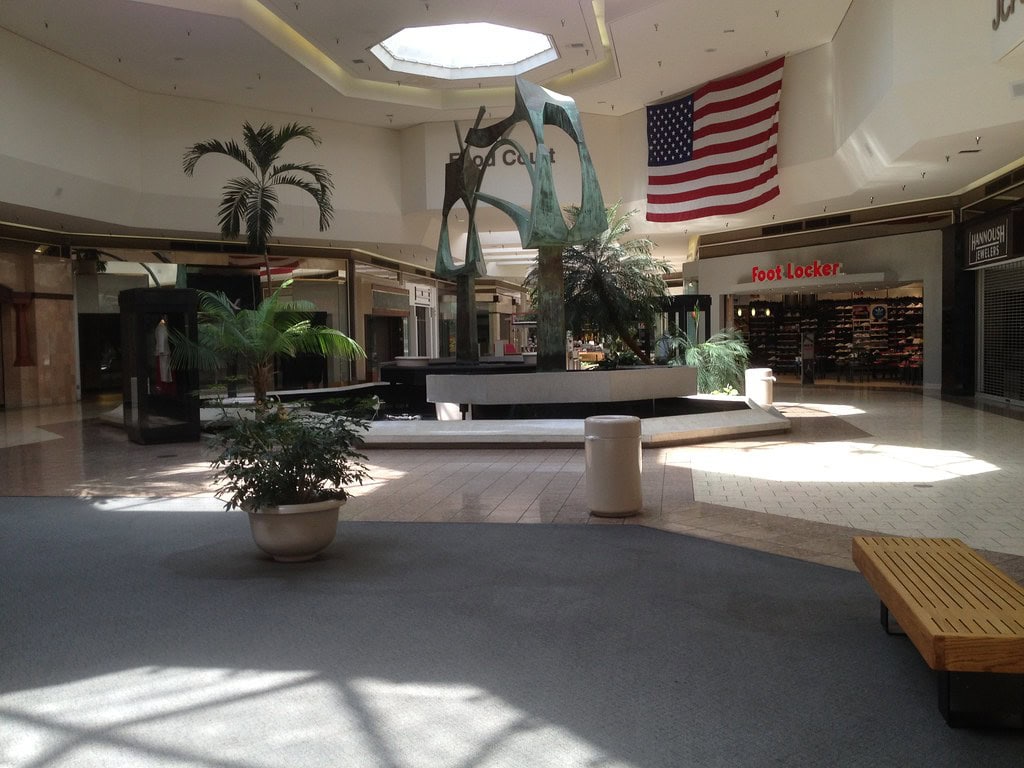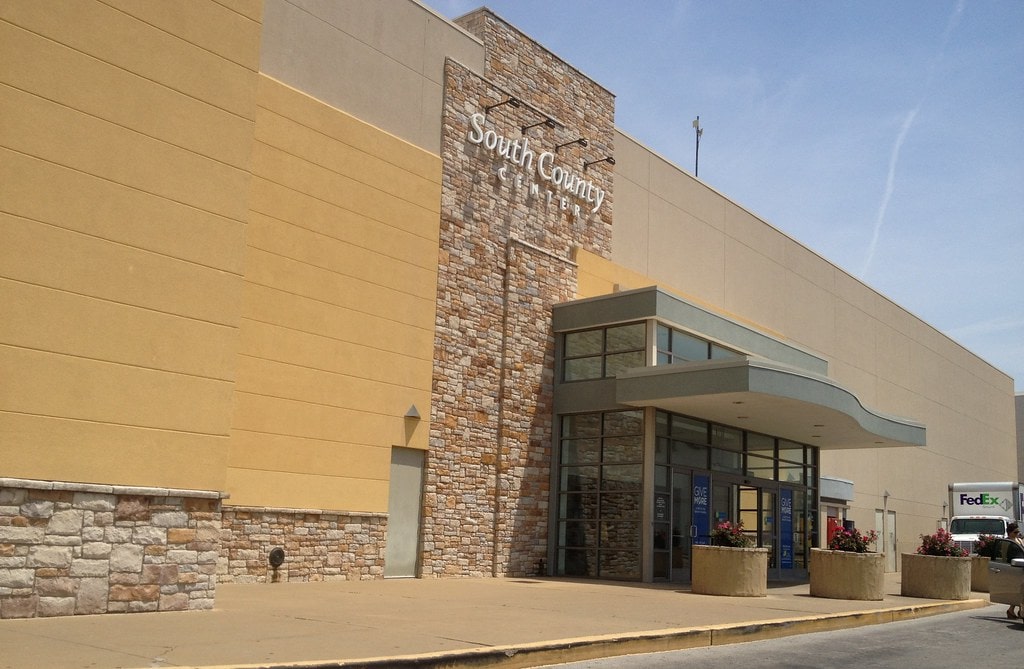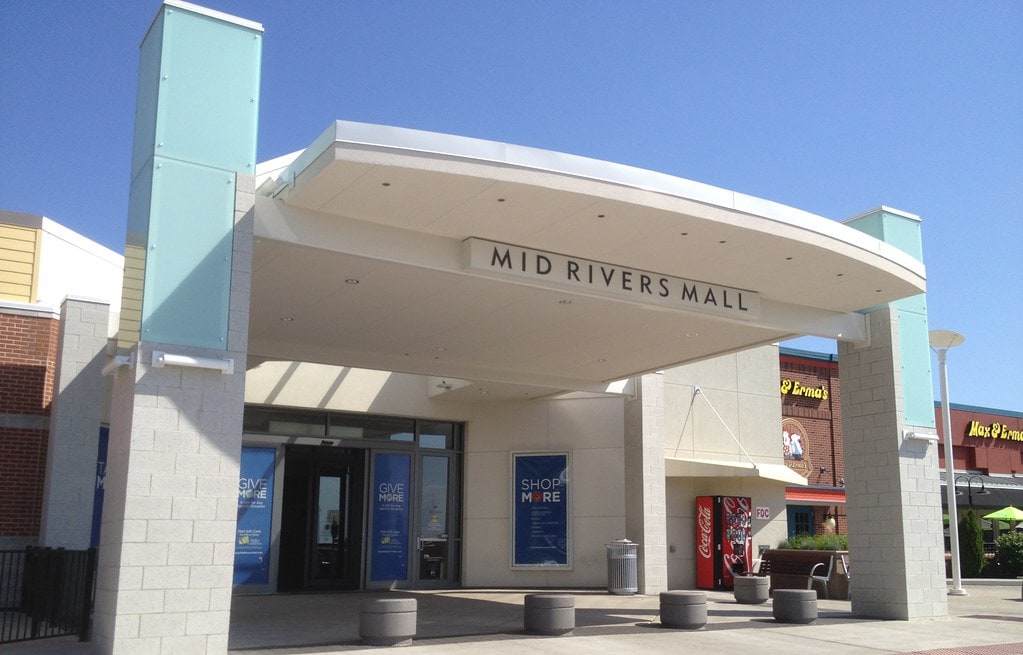Origins and Development (1976–1990)
Chesterfield Mall opened its doors on September 1, 1976, marking a new era for retail in Chesterfield, Missouri. The Richard E. Jacobs Group developed the mall, and is strategically located at the intersection of Interstate 64 and Clarkson Road.
As a sister mall to Jamestown Mall in Florissant, Missouri, it began with two major anchor stores: Sears and Stix, Baer, and Fuller. This set the foundation for the mall’s growth in the following years.
In 1978, just two years after opening, the Chesterfield Mall 4 Cinema made its debut. Located adjacent to the main shopping area, the cinema quickly became a favorite among residents. By 1981, Famous-Barr, another key department store, joined the lineup of anchors, further boosting the mall’s popularity.
Over time, Chesterfield Mall evolved into a hub for shopping and entertainment, drawing in visitors from across the St. Louis metropolitan area.
The mall’s first decade of operation saw continuous expansion and change. In 1984, following the acquisition of the chain, Dillard’s took over the Stix, Baer, and Fuller space, adding another layer to Chesterfield Mall’s retail offerings.
Throughout the 1980s, it grew into one of the busiest malls in the region. The groundwork laid during these early years positioned Chesterfield Mall as a prime retail destination, contributing to the list of things to do in Chesterfield, MO.
Peak Years and Expansion (1990–2005)
During the 1990s, Chesterfield Mall thrived as a central shopping destination for the St. Louis metropolitan area. By the mid-1990s, several high-profile stores opened within the complex, making it a top retail destination.
In 1996, the mall underwent a significant renovation to keep pace with changing consumer trends. This update modernized the interior and attracted new tenants.
Westfield Group purchased the mall in 2002 and rebranded it as Westfield Shoppingtown Chesterfield. In 2005, after JCPenney closed its anchor store, the space was repurposed into a variety of smaller shops and eateries.
The same year saw the grand opening of a 14-screen AMC Megaplex, which became a major attraction for visitors and added to the mall’s appeal as a hub for shopping and entertainment.
Decline and Foreclosure (2006–2018)
By the mid-2000s, Chesterfield Mall began to experience a downturn. As competition from newer developments like Chesterfield Commons grew, foot traffic started to decrease.
The closure of Dillard’s in 2016 after a water main break marked the beginning of an ongoing struggle for the mall.
Though there were plans to reopen, Dillard’s ultimately announced its permanent closure in 2018, leaving one less anchor store to draw in shoppers.
In June 2017, foreclosure proceedings were finalized, with C-III Capital Partners becoming the temporary owner of the mall. During this time, many stores, including American Girl and Sears, also shut their doors.
In 2018, Hull Property Group acquired Chesterfield Mall, but the damage had already been done. The last remaining anchor, Macy’s, closed in 2022, followed by the final shutdown of the AMC Cinema. This left the mall without any anchor stores and little hope of revival.

The Staenberg Group and Redevelopment Plans (2019–2024)
In February 2020, The Staenberg Group purchased Chesterfield Mall, breathing new life into the declining property.
The company announced a bold $2 billion redevelopment plan to transform the mall into Downtown Chesterfield, a vibrant mixed-use development.
This new concept would include residential apartments, office spaces, retail, and dining areas, all surrounding a public park. The project aimed to reshape Chesterfield into a more modern, walkable community.
As part of the redevelopment, Macy’s, the last remaining anchor, closed its 200,000-square-foot store in 2022 and moved into a smaller location at Chesterfield Commons.
The decision signaled the end of traditional retail dominance at the mall. The redevelopment plans were met with a mix of excitement and concern from the local community.
Preparations for the mall’s demolition were already in progress by 2023, and The Staenberg Group worked closely with the city to finalize the project’s future.
The mall’s final chapter began in 2024, when the remaining tenants, such as V-Stock and The Cheesecake Factory, closed their doors for good.
V-Stock left the mall in July, and The Cheesecake Factory followed in August, signaling the official end of the shopping center. By August 31, 2024, Chesterfield Mall was completely vacant and ready for demolition.
On October 15, 2024, demolition crews began tearing down the structure, making way for Downtown Chesterfield, the long-awaited redevelopment project.
Downtown Chesterfield Project
The redevelopment will introduce nearly 2,400 new apartments, along with office spaces, restaurants, retail shops, and a grocery store.
Central to the project will be a public park complete with a bike path and pedestrian trails designed to provide much-needed green space in the area.
While some residents are excited about Chesterfield’s future, others have raised concerns. Local groups, such as Citizens for Developing Downtown Chesterfield, expressed worries about increased traffic and overcrowding.
After negotiations and community meetings, a compromise was reached, including more green space and public parks than initially planned.
The demolition and redevelopment process is expected to take around ten years. Key infrastructure, including roads and sidewalks, should be completed by the summer of 2026.
The first residential units are scheduled to be ready by the fall of 2028. Dillard’s building will be preserved and included in the new development.
Of the $2 billion price tag, $352 million will come from tax increment financing (TIF), which will support public infrastructure improvements like roads, utilities, and parking.








